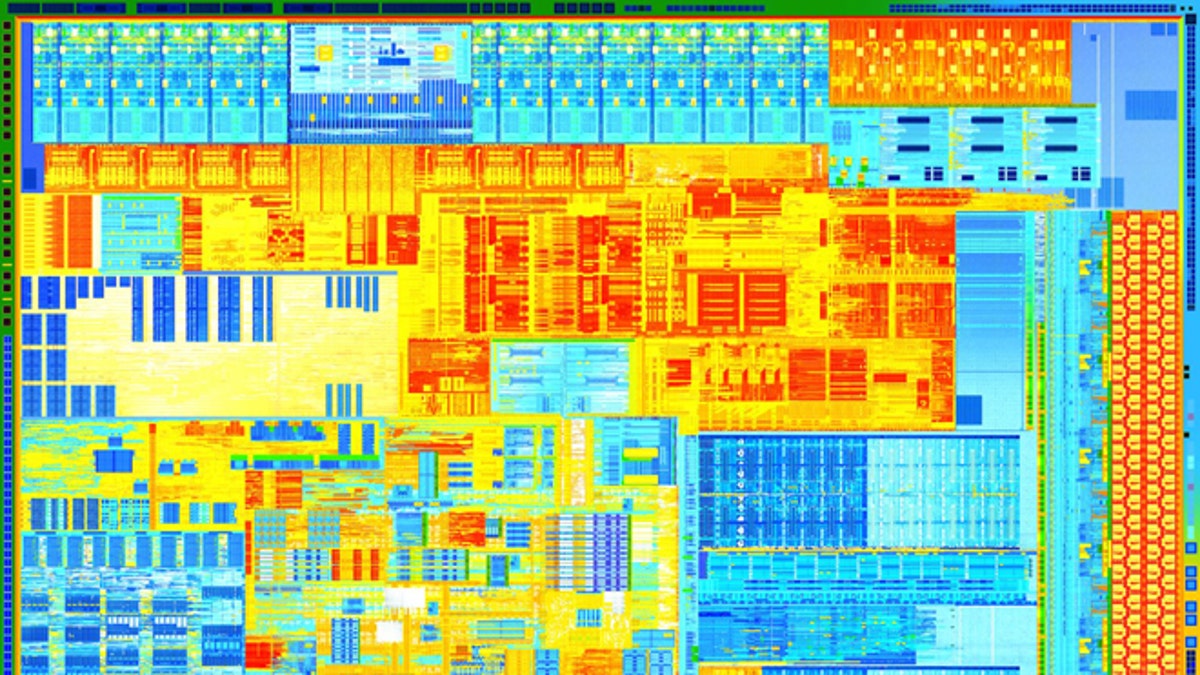
A portion of the latest Intel Core CPU, built off a new 22-nanometer manufacturing process that the company says will fuel Moore's Law for years to come. (Intel Corp.)
Transistors inside new Intel CPUs unveiled last week are hundreds of times thinner than a human hair thanks to a 22-nanometer manufacturing process that the company says “fuels Moore’s Law for years to come.”
Not everyone agrees.
Theoretical physicist Michio Kaku believes instead that an end to Moore’s famous theory is -- at last -- in sight.
"In about 10 years or so, we will see the collapse of Moore’s Law," said Kaku, professor of theoretical physics at City University of New York (CUNY), in a videotaped interview on BigThink.com.
“In fact, already we see a slowing down of Moore’s Law. Computing power simply cannot maintain this rapid, exponential rise using standard silicon technology.”
Is it possible? Could the end really be in sight for Moore’s Law?
In 1965, an article in Electronics magazine by Gordon Moore, the future founder of chip juggernaut Intel, predicted that computer processing power would double roughly every 18 months. Or maybe he said 12 months. Or was it 24 months? Actually, nowhere in the article did Moore actually spell out that famous declaration, nor does the word "law" even appear in the article at all.
[pullquote]
Yet the idea has proved remarkably resilient over time, entering the public zeitgeist and lodging hold like a tick on dog -- or maybe a stubborn computer virus you just can't eradicate.
Part of that is because of Intel itself, which keeps pulling out the old saw. Last year Intel told FoxNews.com that Moore’s Law was just as relevant as when it was conceived, 45 years earlier.
"Yes, it still matters, and yes we're still tracking it," said Mark Bohr, Intel senior fellow and director of process architecture and integration. A section on Intel's website helps keep the story alive, explaining that "Moore's Law states that the number of transistors on a chip will double about every two years. Intel has kept that pace for over 40 years, providing more functions on a chip at significantly lower cost per function."
Kaku acknowledged the latest CPUs from Intel, which use a unique three-dimensional design, do continue roughly doubling processors. He says that new design is nonetheless proof that the Law is winding down.
“The two basic problems are heat and leakage,” Kaku said. “That’s the reason why the age of silicon will eventually come to a close. “
By continuing to shrink the parts that go into processors, heat becomes concentrated. At a point in the near future, “the heat generated will be so intense that the chip will melt. You can literally fry an egg on top of the chip, and the chip itself begins to disintegrate.”
Beyond that is the issue of leakage, a physics problem.
“You don’t know where the electron is anymore. The quantum theory takes over. The Heisenberg Uncertainty Principle says you don’t know where that electron is anymore, meaning it could be outside the wire, outside the Pentium chip, or inside the Pentium chip. So there is an ultimate limit set by the laws of thermal dynamics and set by the laws of quantum mechanics.”
Wild, futuristic ideas such as quantum computing and molecular computing may someday transform our computers -- maybe even in the not-horribly-distant future, he admitted.
But it won’t save Moore's Law.
“Sooner or later even three-dimensional chips, even parallel processing, will be exhausted,” Kaku said.
